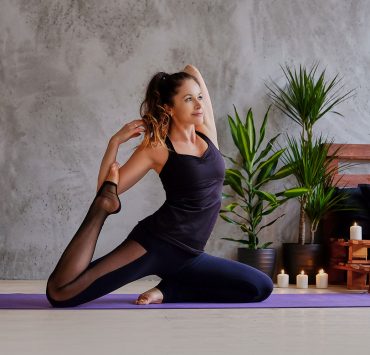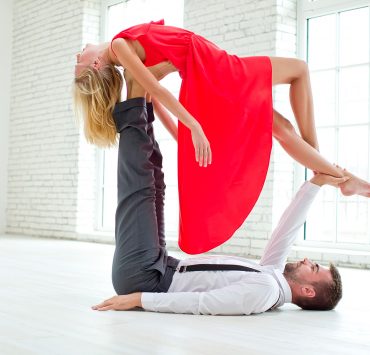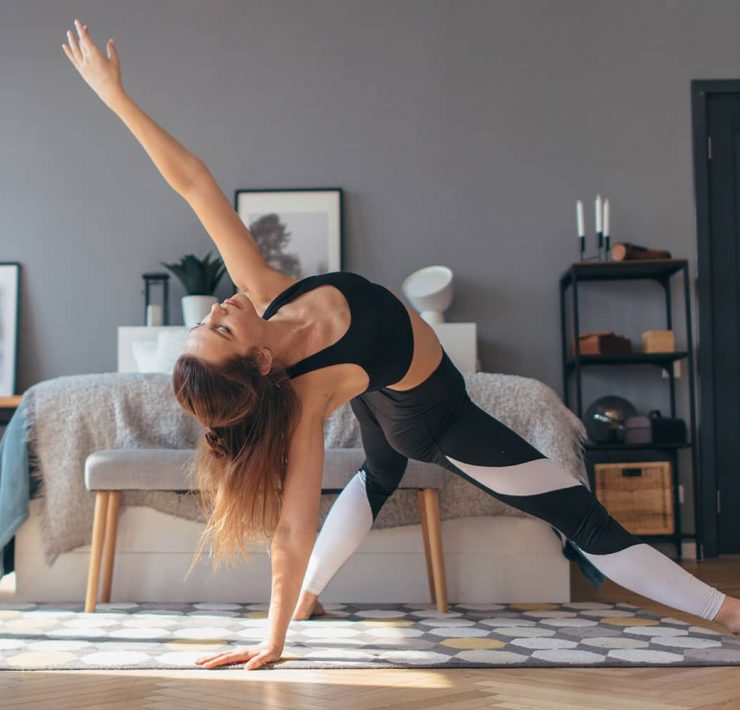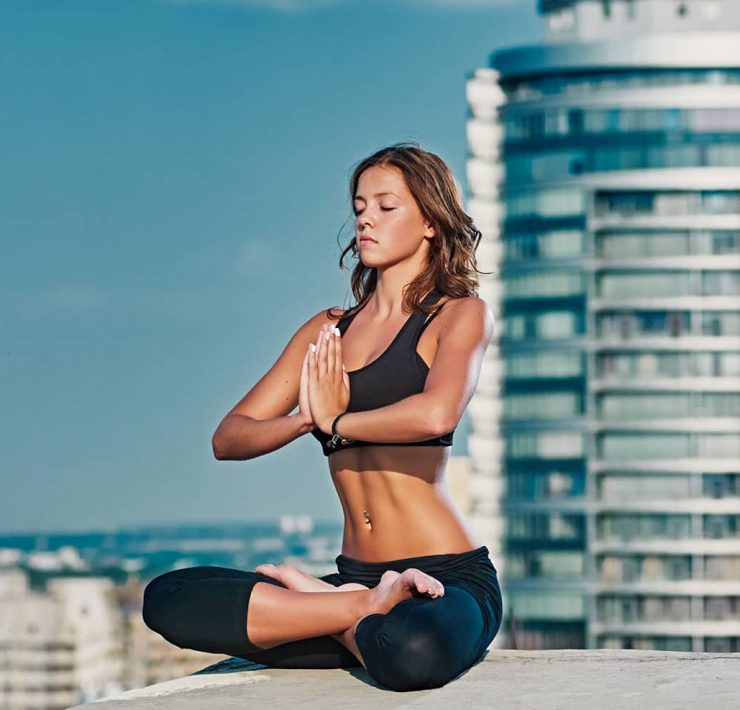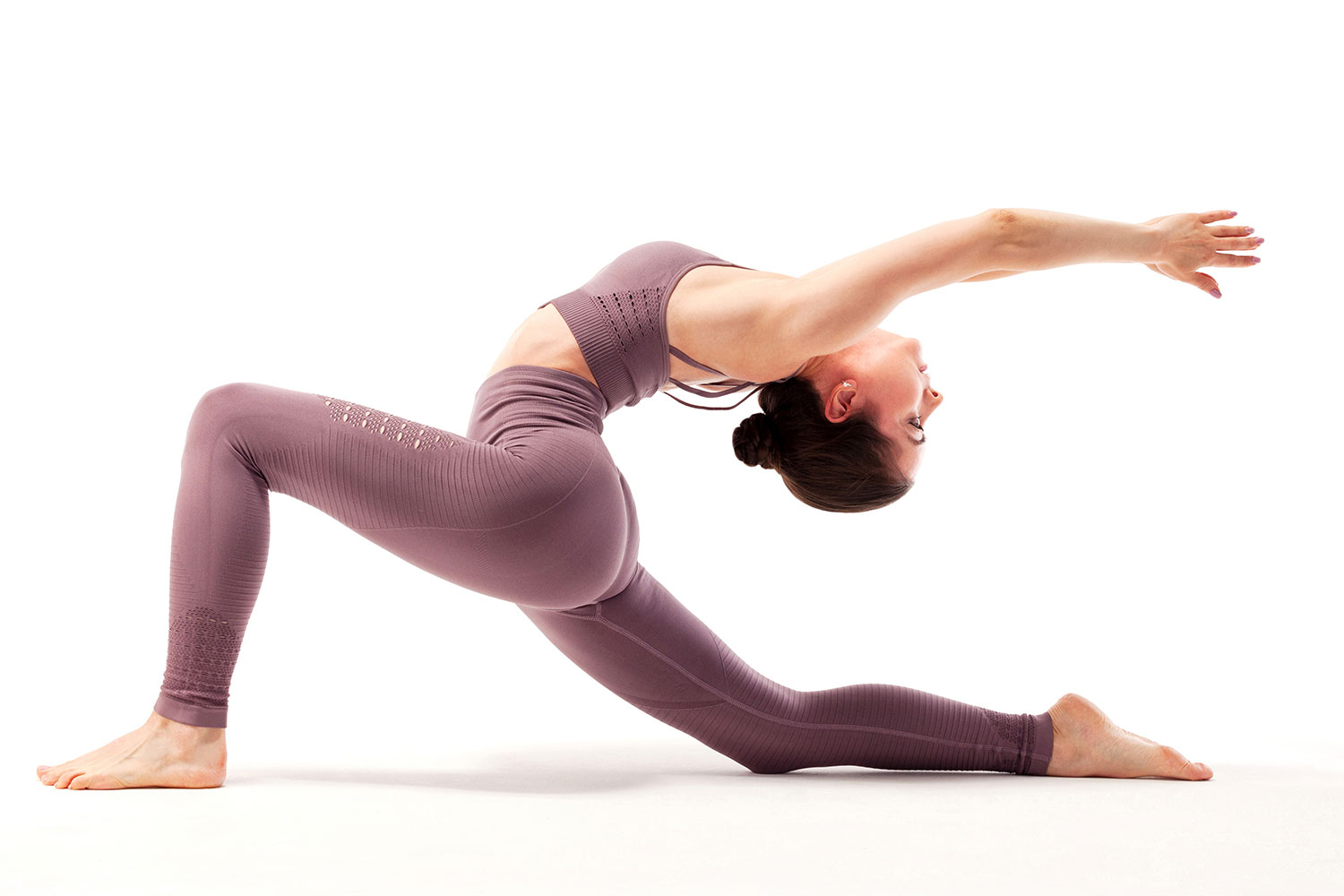
Andrea has been hosting yoga retreats in various locations worldwide…
With many different forms of yoga now commonly practiced in the Western world, it can be challenging to differentiate between one and the next. Many varieties teach similar poses, and yet the feel of classes can vary dramatically. From Restorative to Ashtanga, the experience varies dramatically. It comes down to a variety of factors, including sequencing, flow, timing, and focus. “Flow” is one of those terms we hear often, a notion that plays a big role in the frequently practiced style of yoga known as Vinyasa.
What is Vinyasa Yoga?

Vinyasa is a style of yoga that combines transitions between postures with the breath, a practice that helps us to achieve unity and balance within mind and body. From Sanskrit, the world translates to, “to place in a special way,” which refers to the way that poses are aligned in intuitive and harmonious ways so that they unfold naturally as one practices. Surya Namaskar might be the most well known Vinyasa sequences. It is an asana flow, most often taught at the beginning of class, which exemplifies the sort of smooth transitions that can bridge each gap between poses. Each movement is associated with some stage of a breath cycle – inhalation, exhalation, or a hold – and helps to increase mental focus and awareness.
Vinyasa yoga is believed to have originated around 300 BC, stemming from the Ashtanga philosophy and practice; however, our modern take on Vinyasa has a more recent history. The Vinyasa, or “flow yoga,” traditionally practiced in the West is said to have developed later on in the 20th century by a man by the name of Krishnamacharya, also known as the “Father of Modern Yoga.” His yogic practice consciously wove breath with movement, perhaps the most noteworthy characteristic of a Vinyasa practice. Still, there are traces of Vinyasa that date back to more ancient times, suggesting that Vinyasa is a practice that was developed long ago and has grown with the ages.
What Is the Difference Between Vinyasa and Ashtanga Yoga?

Vinyasa and Ashtanga yoga are two practices whose names are often used interchangeably. However, while these practices have striking similarities, there is a key difference between them. You could say that Ashtanga is Vinyasa but Vinyasa is not Ashtanga. In other words, Vinyasa is a broader stroke of yoga that has no set requirements for the poses or sequences to be practiced, while Ashtanga is a type of Vinyasa practice that is fixed. Ashtanga practice stays the same from class to class, incorporating six series of poses practiced in a set order. Surya Namaskar begins each class.
The Concept of Flow

Often called “flow yoga,” Vinyasa focuses on smooth transitions between each asana; however, this notion of “flow” goes beyond physical fluidity. Vinyasa embodies the philosophy of parinamavada, a concept that encourages us to always be exactly where we are, and to embrace the fact that change is a constant part of life.
Breathing in, I calm body and mind. Breathing out, I smile. Dwelling in the present moment I know this is the only moment. Thich Nhat Hanh
When we are in a full-bodied state of flow, we find ourselves deeply aware of the present state of reality, and we move in such a way that effort is paradoxically effortless. We let go of past notions about who we are or what has happened, and we also release our ideas about what is or is not to come. In flow yoga, we are asked to be entirely present with just this unfolding moment. With practice, this state of flow becomes more effortless, and we find ourselves more easily falling with grace into this way of being. This highlights the importance of aligning breath with movement; our breath draws us deeply into the present moment, facilitating our ability to always be where we are. Breath by breath, Vinyasa becomes a moving meditation as we find contentment with each unfolding moment.
Benefits of Vinyasa Yoga

There are countless benefits associated with this active practice. As a tool to help bring us into the present moment – into this sought after state of flow – Vinyasa helps us to ease the racing mind, bringing us back into our inner state of balance and harmony. Research has also found that it is beneficial as a complementary approach to managing depression. It encourages mindfulness, which can help to reduce stress and improve emotional regulation.
As a physical practice, Vinyasa helps to increase strength and flexibility. Various poses are attributed to the strengthening and stretching of various muscle groups. For instance, Plank Pose promotes strength in the core and upper body while Standing Forward Fold stretches the hamstrings, calves, and hips. Vinyasa practice also helps to increase blood flow, improve cardiovascular health, increase energy, promote weight loss, and improve balance.
Since Vinyasa yoga is heavily focused on breathing, numerous health benefits can be attributed to this aspect of the practice. Pranayama, or the regulation of our breathing, can help to improve blood circulation, enhance concentration, heighten one’s experience of relaxation, release stress and anxiety, and help to manage headaches. Pranayama grounds us in the present moment, promoting wellbeing on numerous levels.
Vinyasa Yoga Sequencing

Unlike in yoga styles such as Yin or Restorative, Vinyasa yoga teachers and students rely on proper sequencing to help create the sought after flow of this type of class. Most Vinyasa classes begin with Surya Namaskar, or Sun Salutations, and end with Savasana. In between, a variety of sequences are transitioned through.
There are a few broad categories of sequences that can help to break this practice down. Surya Namaskar is the first, which has a couple of different variations. Standing sequences, seated sequences, and finishing sequences are the components that make up the bulk of the practice, leading to the final resting pose of Savasana. Coordination of breath and movement is of top priority when planning sequences, helping each student’s focus to remain entrenched in the present moment.
How To Do Vinyasa Yoga At Home

To practice Vinyasa at home, there are numerous online resources to help you find different types of sequences that work for you. The following is Sequence A of Surya Namaskar, one of the most common sequences in Vinyasa practice and one that will help to inspire further flow.
- Begin in Mountain Pose with your feet about hip-distance apart. Your shoulders should fall gently down your back and arms should rest by your sides. Tuck your buttocks in slightly and bring your hands to prayer position at the chest. Take a few deep breaths to ground yourself.
- Inhale as you raise your arms out to the sides and up towards the ceiling. Come into Raised Hands Pose by allowing the shoulders to relax and the palms to face one another, rising parallel. Gaze forward.
- Exhale and gently bend forward, coming into Standing Forward Fold. The lower back should remain straight, letting the bend come through the hips. Let the hands rest wherever they reach and the head to fall naturally.
- Come into Half Standing Forward Fold on your next inhalation, straightening the spine to form one straight line between the crown and the tailbone. The hands will rise slightly but should remain in contact with the legs.
- On your next exhalation, fold forward once more, returning to Standing Forward Fold. Hold long enough here to follow the exhalation with an inward breath.
- Exhale and lightly hop or step both feet behind you, coming into Plank Pose. Your wrists should be directly beneath your shoulders and your shoulders should relax gently away from the ears. Form one straight line from the top of your head to the heels. Take a full breath here.
- On your next exhalation, lower down into Four-Limbed Staff Pose, commonly referred to as Chaturanga. Bend at the elbows so that your upper arms are parallel with the ground. Engage the core as you lower the entire body down with control. An alternative version is to first come to the knees and then move the upper body into position.
- Inhale as you rise into Upward-Facing Dog, uncurling the toes so that they support you in this pose. Push through the chest, opening it up to the wall ahead of you. Allow your shoulders to fall back as the chest opens and you gaze forward. Engage your legs for support.
- Exhale as you tuck the toes and push your tailbone towards the ceiling, coming into Downward-Facing Dog. Take a few breaths here to ground yourself, feeling into a stretch throughout the legs and back.
- On your next exhalation, gently step the feet forward to return to Standing Forward Fold once more. Remember to check the spine, ensuring that the lower back is straight.
- Inhale as your bend your knees slightly and raise your arms up and overhead, returning to Raised Hands Pose. Check that the shoulders are away from the ears and the arms are engaged. Tuck the buttocks in slightly and gaze forward.
- Exhale as you lower your arms back to your heart center, coming into Mountain Pose with Anjali Mudra once more. Take a few breaths here to give thanks for your practice. You may run through this sequence a couple more times.
Vinyasa is a gateway into flow. Through this practice, we are able to unite body and mind through connecting with the breath. When beginning any new practice, it is important to consult with a healthcare practitioner to ensure that the practice is right for your needs – contraindications do exist. However, once this practice is opened to in a way that suits the needs of your body at present, it is entirely possible to find peace, harmony, and stillness as you move through the smooth sequences offered by Vinyasa. Open the heart and quiet the mind to get the most out of your practice, sinking into the divine sense of presence that exists within.
What's Your Reaction?
Andrea has been hosting yoga retreats in various locations worldwide since 2003 and continues to encourage her students to live as the best version of themselves. Yogic living provides the framework for her informative writing, which is chock-full of beneficial tips and tricks.






